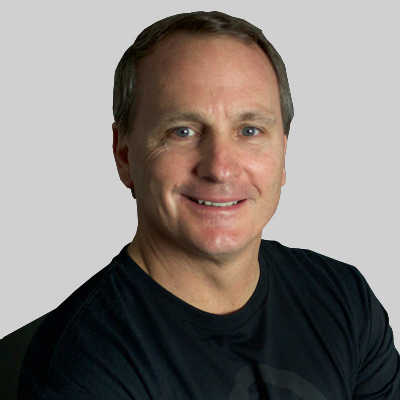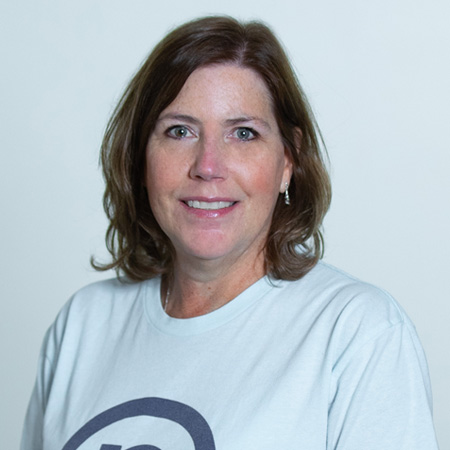Understanding How These Tenets Create Authentic Value
In the first of this two-part series, we introduced the six tenets of Nelnet’s DNA: Long-term perspective; economic moat; discounted cash flow; opportunistic/contrarian; diversification; and debt. We noted that these tenets tie closely to Nelnet’s core values.
Now, in Part II, Nelnet’s executives provide greater perspective on these six tenets of Nelnet’s investment philosophy, what they mean, and how Nelnet implements them. We also explore what they mean for defining who Nelnet is—to the associates, customers, communities, and shareholders the organization serves.
Long-Term Perspective
According to Nelnet Founder and Executive Chairman of the Board Mike Dunlap, Nelnet isn’t focused on short-term moves in their stock price and instead wants to create value for decades to come. The organization believes focusing intellectual capital on its customers and associates will create real long-term value versus hyping its stock. Nelnet doesn’t give earnings guidance, nor does the company do earnings calls.
As Dunlap points out, the vast majority of companies that are publicly traded give earnings guidance on what they think they’re going to make for the next year or the next quarter. “The reality is that it’s really hard to predict what’s going to happen and what those earnings are going to be. If you see a company that’s right on their guidance every time, you get really skeptical that somehow they’re manufacturing those earnings. These companies spend time trying to give guidance to the market on where the earnings are going to be and on having earnings calls every quarter—and going to conferences to try to manage their investors,” emphasizes Dunlap.
In contrast, Nelnet’s philosophy is to stay true to the organization’s values.
We focus on: #1 adding value to our customers; and #2 creating a great environment for associates to work in; and #3 diversifying revenue. None of our first three core values have anything to do with earnings guidance or earnings calls, so those are wasted time and iterations.
“We look at it short term, the market is a voting machine. Long-term, it’s a weighing machine. That’s a Ben Graham quote. You can pump up your value and get people to vote for you in the short term, but long term, it’s going to gain you what? What value are you creating, what free cash flow are you creating? What value to your customers are you creating?”
“We just don’t worry about what our stock price is. Year in and year out, we worry about adding value to our customers over time and value to our business over time—and that will eventually be reflected in the value of your stock price,” Dunlap notes.
The facts back him up. As Nelnet Chief Executive Officer Jeff Noordhoek pointed out in the 2022 letter to shareholders, Nelnet’s book value per share has grown at an almost 17% annual rate since the organization went public in December 2003. “We believe those numbers provide a basic back-of-the-envelope report card highlighting the value we create for our shareholders year after year.”
Economic Moat
Nelnet’s philosophy is to emphasize strong, sustainable competitive advantages, recurring revenue, profit margin, and cash flow. These are the attributes Nelnet looks for in businesses they want to invest in, manage, and grow.
As Noordhoek explains, “When we talk about moat, it’s really about how defensible your business is—how easy it is for someone else to come into that business and compete against you. If you look at the core Nelnet businesses—and I’ll start with Nelnet Business Services (NBS), for example, in the payment space—they have a massive market share, which is 40% or more in the K-12 payments business. They have proprietary technology they built over 20-plus years, and if someone were to try to compete with that business, they would have to spend hundreds of millions of dollars to build the technology. They’d have to spend millions of dollars on marketing trying to convert someone to come over to their new product. There’s a giant moat—and that tells you that we’ve really got a competitive advantage.”
When we talk about moat, it’s really about how defensible your business is—how easy it is for someone else to come into that business and compete against you. Where there’s a giant moat, that tells you that we’ve really got a competitive advantage. If you go through virtually every business we have, you’ll find that.
Nelnet Diversified Services (NDS) is another prime example of Nelnet’s business segments having a large moat. As Noordhoek points out, “If you look at our loan servicing business and NDS, there’s only a handful of players left in the industry. The reason is the cost to entry is gigantic and you have to build a system, of which we have multiple hundreds of millions of dollars invested in ours. We have 15-plus million borrowers and a huge moat to administer our programs. Other people tried to get into that business, but they quickly found out how hard it is and how expensive it is, so that gives us a competitive advantage. It also allows us to invest in the future as it relates to where we’re going to go from here on out, because those are incremental investments versus starting from scratch.”
Discounted Cash Flow
Some companies play games by capitalizing everything they can possibly get their accountants to agree with; Nelnet doesn’t play those games. The value of bonds and stocks comes from “free” cash flow. The organization tries to make decisions that create long-term cash flow rather than making their short-term financials look better to the detriment of our long-term cash flow.
As Chief Operating Officer Terry Heimes points out, “We’re looking at how the discounted cash flow will impact us—regardless of how it flows through our short-term financial statements. We’re not momentum or hype buyers or earnings multipliers.”
We’re interested in what cash will be generated by the organizations we acquire or invest in over the long term. If that cash will be used to serve and retain customers—and protect the market—that’s what we’re looking for, and that’s how we know our value will be consistent over time.
A prime example of a business segment that demonstrates Nelnet’s emphasis on discounted cash flow is Nelnet Communication Services (ALLO). As Heimes points out, “We identified that this was a quality product that would have high demand, high customer retention based on great customer service—and it would generate substantial cash over the long term. Even if we had to record losses to get there, we knew it would generate value over the long term through supporting the product ALLO offers.”
Opportunistic/Contrarian
Nelnet buys businesses to hold and grow over time rather than looking for current market “darlings.” Mike Dunlap emphasizes that the organization isn’t looking for the greater fool to buy at a high price and then sell at a higher price to an even greater fool.
Opportunistic originations, acquisitions, and prudent leverage have continued to create significant free cash flow for Nelnet. Dunlap points out that, with the Fed keeping interest rates low while inflation became entrenched in the economy, Nelnet had the opportunistic ability to aggressively hedge their portfolio with pay-fixed swaps.
According to President of Nelnet Financial Services Matt Dunlap, “Nelnet is able to be opportunistic because we have such a strong financial position. For example, this past spring, the instability of Silicon Valley Bank provided an opportunity for us to act on that instability and acquire portfolios from other banks and other entities that had decreased appetite for risk. Their concern about their liquidity made them interested in selling—and selling cheaper than they otherwise would have.”
As Matt Dunlap explains, “Nelnet Bank is a unique operating segment that provides us a stable funding source that’s not at the whim of capital markets, although we can leverage the capital markets when it makes sense. The bank allows us to leverage different loan asset classes that we believe will bring strong risk-adjusted returns to Nelnet in the long run.”
Diversification
Nelnet’s diversification is focused on the organization’s core competencies: servicing, software, payments, finance, and with a large focus on education.
Nelnet President Tim Tewes emphasizes that, “Diversification is a core part of Nelnet’s history and culture, and its evolution as a business. We’ve always been able to look at markets and understand a place to go with diversification. Early on, it was about self-preservation and expansion.”
As Tewes points out, “It all starts with understanding the market and where the opportunities are.”
It’s in our DNA to always be looking for the next opportunities. We haven’t been wrong very often—and that’s because we’re starting from knowing the customer well and understanding their needs.
“There’s diversification that happens within each business segment—but then there’s diversification that happens within the broader corporation that creates whole new business segments,” emphasizes Tewes. “There are initiatives that have happened within our company because one of our execs has seen an opportunity. Like in our solar business or with ALLO, we were trying to solve a problem for the city of Lincoln, Neb., and it ended up being this great big business,” adds Tewes.
What’s the key to diversification? According to Tewes, “The essence is understanding our customer so well that we can anticipate their needs. Customers tell you what problems they have today. They aren’t always thinking about problems for tomorrow. But the business acumen part of it is to figure out all the problems they have today and then the solutions that they’ll need for tomorrow. Because development cycles and technology are relatively long, you could be trying to solve a problem that exists today, and in that time the checkers on the checkerboard moved. Now you’ve got to adapt what you developed for a new or a similar problem but not the exact problem that you built the solution for. We’ve been good at thinking about what our customers’ needs are going to be one, two, three years down the road. It’s a little harder to think much further than that because you just don’t know what needs your customers will have.”
Tewes notes there are a couple of different ways to achieve diversification. “There’s diversification by investing in a product or service we’ve organically built because we understand the market and the needs of the market so well. There are other areas of diversification where we use our capital and go acquire a student information system, for example, because it would take so long to build it and it would take so long to get the customers, but it’s sorely needed, and we can integrate it with our existing products. So we’ll use acquisition to diversify—and it’s usually in an area where it’s not one of those core competencies like payments, processing, finance, education, or technology. But sometimes we’ll acquire the technology to be able to serve the customer.”
He notes an example of acquiring the technology within NBS was the acquisition of RenWeb—now FACTS’ student information system—in 2014. A more recent example of a Nelnet acquisition to meet customer needs outside Nelnet’s core competencies was the 2022 acquisition of GRNE Solar to allow Nelnet Renewable Energy to design, procure, and construct its own solar assets.
Debt
As Chief Financial Officer Jim Kruger explains, Nelnet’s investment strategy focuses on two important concepts related to debt.
- “We use debt to finance loan assets because that’s how you get leverage and that’s how you get better returns. When you have as many assets as we do, we don’t have enough cash to be able to finance those with cash.
- On the operating side, we try not to use debt too much. When we acquired Great Lakes, we used our line of credit to make that acquisition. That was an example where we didn’t have the cash and had to use our line of credit to finance it. It’s important to try not to leverage yourself too much on the operating side of the business.”
Kruger explains the first concept in greater depth: “Since the 1990s, Nelnet has utilized debt to finance our loan assets. We compartmentalize those loan assets into special purpose entities. As a result, we can isolate the loans and the debt—and we sell that debt to the open market. We have investors who buy our bonds and that allows us to finance our loan assets. It’s pretty common in the industry to put leverage on assets to provide a higher rate of return than you would otherwise get if you were financing all of those assets with your own capital. We’ve used a combination of warehouse—which is temporary debt—and then asset-backed securities (ABS), which is more of a term or for the life of the loan. We use the warehouse debt to accumulate assets and to form short-term debt and then use the ABS market to finance those assets on a long-term basis. That works really well because you have an asset behind the debt as it relates to non-loan asset debt.”
When it comes to Nelnet’s use of a line of credit, Kruger points out, “The company has typically been relatively low on debt, and that has served us well over the years. There are occasionally times when you buy something or several opportunities come along at the same time and maybe you use your line of credit. But by and large, we’ve tried not to have a whole lot of debt outstanding on our line of credit.”
Kruger describes how using debt wisely has created opportunities for Nelnet.
We try to run the company with low leverage outside of assets, and we’ve able to use the recurring cash flow coming off these portfolios to fund other things such as starting a bank, starting renewable energy.
As Kruger explains, “This is all possible because we use leverage when it makes sense, but we try not to leverage the business to the point where we get out over our skis.”
Conclusion
According to Mike Dunlap, “Our philosophy has allowed us to stay true to our original priority of serving customers, associates, communities, and shareholders while we diversify as a business. While other companies come and go in many of the business segments we operate in, we thrive and excel. Plus, we’ve diversified into new areas like opening a bank, investing in and developing renewable energy, and more through our drive to innovate.”
While Nelnet’s investment philosophy uses ideas that aren’t unique, it does align the organization’s core values with investment and business strategy to create authentic value for customers, associates, and shareholders—and that is unique among publicly held companies. Call it DNA, a smart investment philosophy, or whatever else you will: it reads as genuine Nelnet. For Nelnet and its stakeholders, this first 40-plus years seems just the start of DNA-predicted long-term growth and success.







